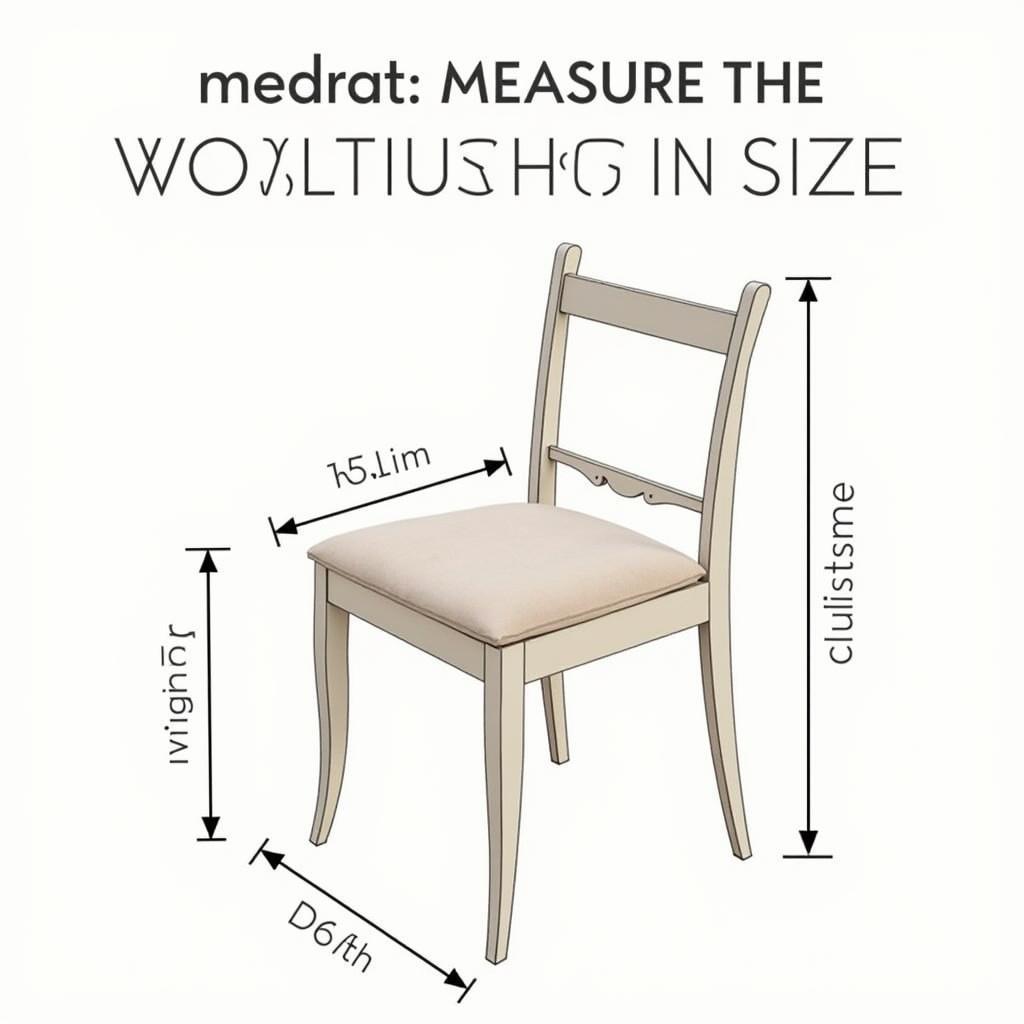Chair Cushions for Elderly: Finding the Perfect Fit for Comfort and Support
October 23, 2024Choosing the right chair can make a world of difference in an elderly person’s life. However, sometimes even the best chairs need a little extra something to provide optimal comfort and support. That’s where Chair Cushions For Elderly come in. These aren’t your average cushions; they’re specifically designed to address the unique needs of seniors, promoting better posture, reducing pressure sores, and enhancing overall well-being.
Why Are Chair Cushions Important for the Elderly?
As we age, our bodies change. Joints might stiffen, muscles can weaken, and we may experience discomfort from prolonged sitting. Chair cushions designed for the elderly help alleviate these age-related challenges in several ways:
- Pressure Relief: These cushions often feature specialized foam or gel inserts that distribute weight evenly, reducing pressure points that can lead to pain and sores.
- Posture Support: Many cushions are ergonomically designed to promote proper spinal alignment, which can help reduce back pain and improve comfort.
- Added Comfort: Let’s face it, sometimes chairs can be just plain uncomfortable. A good chair cushion provides an extra layer of padding, making even the firmest chair more bearable.
What to Consider When Choosing Chair Cushions for Elderly
Finding the perfect chair cushion is about more than just picking one that looks soft. Here are key factors to keep in mind:
1. Material Matters
- Memory Foam: Conforms to the body’s shape, providing excellent pressure relief and support. It can feel warm to the touch.
- Gel: Stays cool and provides a more fluid, pressure-relieving sensation. It might not offer as much support as memory foam.
- High-Density Foam: A firm option that provides good support and durability. It might not be as soft as other materials.
2. Size and Shape
- Measure the Chair: Ensure the cushion fits comfortably within the chair’s seat without bunching or slipping.
- Consider the User’s Needs: If the individual needs extra support in specific areas, look for cushions with contoured shapes or adjustable features.
 Measuring chair for cushion size
Measuring chair for cushion size
3. Additional Features
- Non-Slip Bottom: Prevents the cushion from moving around on the chair.
- Washable Cover: Essential for easy cleaning and hygiene.
- Handles: Make it easier to transport the cushion.
Different Types of Chair Cushions for the Elderly
- Coccyx Cushions: These cushions have a U-shaped cutout at the back to relieve pressure on the tailbone, making them ideal for individuals with tailbone pain or sciatica.
- Wedge Cushions: Sloped cushions that help promote better posture by tilting the pelvis forward. This can be particularly helpful for those who slouch or experience lower back pain.
- Ring Cushions: Donut-shaped cushions designed to relieve pressure on the perineal area. These are often recommended after surgery or for those with hemorrhoids.
Chair Cushion FAQs
Q: How thick should a chair cushion for an elderly person be?
A: A cushion thickness of 2-4 inches is generally suitable for most elderly individuals. However, the ideal thickness depends on individual needs and preferences.
Q: Can chair cushions prevent pressure sores?
A: While chair cushions can significantly reduce the risk of pressure sores by relieving pressure points, they are not a guaranteed preventative measure. Regular movement and proper skincare are still crucial.
Q: Are chair cushions covered by insurance?
A: In some cases, chair cushions may be covered by insurance if prescribed by a doctor for a medical condition. It’s best to check with your insurance provider to confirm coverage.
Finding the Right Fit
Choosing the right chair cushion for an elderly person can greatly improve their comfort and well-being. When making a decision, consider their specific needs, preferences, and any existing medical conditions. Don’t hesitate to consult with a healthcare professional or occupational therapist for personalized recommendations.
For additional information and resources on creating a comfortable and accessible living environment for elderly loved ones, you can explore our guide on high outdoor chair for elderly with arms.